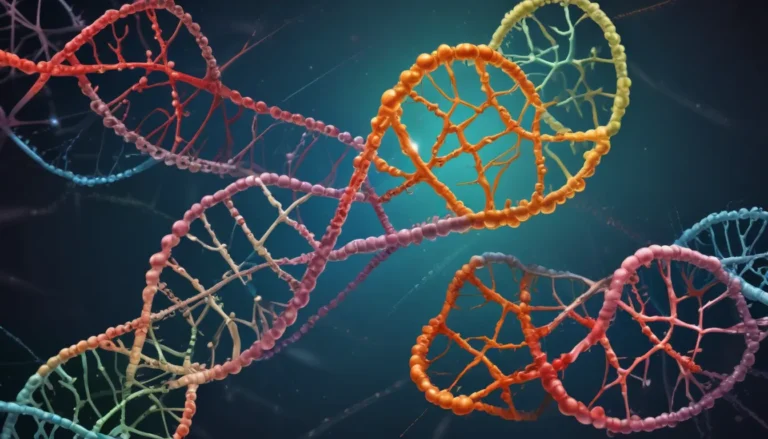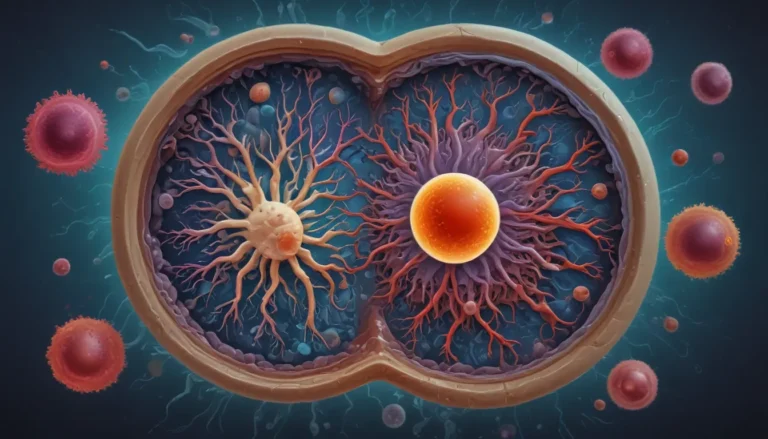A Note About Images: The images used in our articles are for illustration purposes only and may not exactly match the content. They are meant to engage readers, but the text should be relied upon for accurate information.
Welcome to the mesmerizing world of epistasis, a captivating concept entrenched in the realm of genetics. Epistasis delves beyond the conventional Mendelian inheritance model, venturing into the intricate tapestry of genetic interactions that shape the traits and characteristics of living beings. Join us on a journey as we uncover 17 astonishing facts about epistasis, unraveling the mystique of genetic complexity and its profound influence on the diversity of life forms.
Delving into the Essence of Epistasis
Epistasis, a Fundamental Concept in Genetics
At the core of genetics lies the fundamental concept of epistasis, where genes interact with one another to influence the expression of traits. This interaction plays a pivotal role in determining the inheritance patterns of various characteristics, guiding the complexity of genetic outcomes.
Exploring the Diversity of Epistasis
Epistasis manifests in various forms, each showcasing a unique mode of interaction between genes. From complementary epistasis to duplicate gene action, the diverse types of epistasis illuminate the multifaceted nature of genetic relationships.
Unraveling Phenotypic Surprises
The intricate dance of epistatic interactions can lead to unexpected phenotypic outcomes, diverging from traditional Mendelian predictions. These deviations add a layer of unpredictability to genetic inheritance, unveiling the fascinating intricacies of genetic expression.
Epistasis in the Context of Medicine and Evolution
Shaping Disease Development
Epistasis plays a crucial role in the development of diseases, with certain gene interactions influencing the susceptibility and severity of various health conditions. Understanding epistasis is paramount in medical research to enhance personalized medicine approaches.
A Window into Evolutionary Processes
By studying epistasis, researchers gain valuable insights into how genetic interactions contribute to evolutionary changes. The intricate web of gene influence sheds light on the mechanisms driving adaptation and speciation, unraveling the intricacies of life’s evolution.
Practical Applications of Epistasis
Navigating Genetic Mapping Studies
In genetic mapping studies to identify the genes responsible for specific traits or diseases, accounting for epistasis is essential. These interactions can complicate the analysis process, necessitating a comprehensive understanding of gene interactions for accurate results.
Harnessing Epistasis in Breeding
Epistatic interactions play a pivotal role in plant and animal breeding, enabling breeders to manipulate genetic composition to enhance desired traits selectively. This understanding has significant implications for improving agricultural productivity and livestock quality.
Exploring the Nexus of Epistasis Beyond Genetics
Epistasis in Non-Genetic Systems
While commonly associated with genetic interactions, epistasis can also manifest in non-genetic systems like biochemical pathways. These interactions are fundamental to various biological processes, showcasing the broader implications of gene influence.
Influencing Drug Response
Genetic interactions through epistasis can impact an individual’s response to medications, shaping the efficacy and side effects of drug treatments. Understanding these interactions is crucial in tailoring medical interventions for optimized outcomes.
Unveiling the Mysteries of Epistasis
Charting Human Genetic Diversity
The intricate genetic interactions encompassing epistasis contribute significantly to the wide spectrum of human traits and characteristics. Exploring these interactions unveils the genetic groundwork of human diversity, offering profound insights into our genetic makeup.
Revealing Hidden Genetic Variation
Epistatic interactions unveil concealed genetic variation that may not be apparent when examining individual genes in isolation. This expanded understanding of genetic landscapes opens doors to novel discoveries and insights into genetic diversity.
Embracing the Complexity of Epistasis
Context-Dependent Nature of Epistasis
The effects of epistasis are highly dependent on environmental factors and genetic backgrounds, adding a layer of complexity to genetic interactions. Studying gene-gene relationships in diverse conditions unveils the nuanced influence of epistasis.
Facilitating Complexity in Evolution
Epistasis plays a pivotal role in the emergence of complex traits and systems by coordinating multiple genetic components. These interactions have been instrumental in driving the diversification of organisms over evolutionary timescales.
Epistasis: A Paradigm Shift in Genetics
Explaining Non-Mendelian Inheritance
Epistasis provides a key mechanism for understanding inheritance patterns that deviate from classical Mendelian genetics, offering insights into incomplete dominance and co-dominance. Consideration of gene interactions is paramount in deciphering genetic inheritance.
Implications for Disease Management
Understanding the epistatic interactions underlying diseases paves the way for targeted therapies that address the intricate genetic factors at play. This nuanced approach holds immense potential in revolutionizing personalized medicine and optimizing patient care.
Delving Deeper into the World of Epistasis
An Ongoing Frontier of Research
Scientists continue to explore the captivating realm of epistasis, unearthing new insights into the complexities of gene interactions. Ongoing research in this field promises to unveil further mysteries and deepen our understanding of genetics.
Conclusion: Epistasis Unveiled
Epistasis stands as a captivating phenomenon in biology, illustrating the intricate interplay of genes in determining trait expression. Through epistasis, genes weave a complex tapestry of genetic inheritance, shaping the rich diversity of life forms on our planet. These 17 astonishing facts about epistasis shed light on the marvels of genetic interactions and offer profound insights into the genetic foundation of life’s diversity.
FAQs: Unraveling Common Queries
Q: What is epistasis?
A: Epistasis is a genetic phenomenon where one gene’s expression masks or modifies the effect of another gene.
Q: How does epistasis affect gene expression?
A: Epistasis can alter gene expression patterns, leading to variations in traits and phenotypes.
Q: What are the different types of epistasis?
A: The various types of epistasis include dominant epistasis, recessive epistasis, and duplicate recessive epistasis.
Q: Can epistasis influence the inheritance of genetic diseases?
A: Yes, epistasis can play a role in the inheritance of genetic diseases by modifying the expression of disease-causing genes.
Q: Can epistasis affect evolutionary processes?
A: Absolutely, epistasis has a significant impact on evolutionary processes by shaping genetic variation within populations.
Explore the enchanting world of epistasis and unravel the mysteries of genetic interactions that underpin life’s incredible diversity. Join us in the exploration of genetics, evolution, and disease through the lens of epistasis, a cornerstone of genetic complexity.






